Why Japan’s ageing population is dying alone. BY NORIMITSU ONISHI 31 MAR 2018 / UPDATED ON 3 APR 2018
MORE ONerly Hongkongers are way more likely to kill themselves than others. Why?
Cicadas, every Japanese schoolchild knows, lie underground for years before rising to the earth’s surface in summer. They climb up the nearest tree, where they cast off their shells and start their short second lives. During their few days among us, they mate, fly and cry. They cry until their bodies are found on the ground, twitching in their last moments, or on their backs with their legs pointing upwards.
Chieko Ito hates the din they make. They have just started shrieking, as they always do in early summer, and the noise will keep getting louder in the weeks to come, invading her third-floor apartment, making any kind of silence impossible. As one species of cicadas quietens down, another’s distinct cry will take over. Then, as the insects peak in numbers, showers of dead and dying cicadas will rain down on her enormous housing complex in Tokiwadaira, on the outskirts of Tokyo, stopping only with the end of summer itself.
“You hear them from morning to evening,” she sighs.
Is China going down the same path as Japan with its ageing population?
It is the afternoon of her 91st birthday, and unusually hot, part of a heatwave that has community leaders worried. Elderly volunteers have been winding through the labyrinth of footpaths, distributing leaflets on the dangers of heatstroke to the many hundreds of residents like Ito who live alone in 171 nearly identical white buildings. With no families or visitors to speak of, many older tenants spend weeks or months cocooned in their small flats, offering little hint of their existence to the world outside their doors. And each year, some of them die without anyone knowing, only to be discovered after their neighbours notice the smell.
The first time it happened, or at least the first time it drew national attention, the corpse of a 69-year-old man living near Ito had been lying on the floor for three years, without anyone noticing his absence. His monthly rent and utility payments had been withdrawn automatically from his bank account. Finally, after his savings were depleted in 2000, authorities came to the flat and found his skeleton near the kitchen, its flesh picked clean by maggots and beetles, just a few feet from his next-door neighbours.
Men who live alone in the danchi, weakened by age and infirmity [...] are the most vulnerable
The government housing complex where Ito has lived for nearly 60 years – one of the biggest in Japan, a monument to the nation’s post-war baby boom and aspirations for a modern, Western way of life – suddenly became known for something else entirely: the “lonely deaths” of the world’s most rapidly ageing society. “4,000 lonely deaths a week,” estimated the cover of a popular weekly magazine last summer, capturing the national alarm.
To many residents in Ito’s complex, the deaths are the natural and frightening conclusion of Japan’s journey since the 1960s. A single-minded focus on economic growth, followed by economic stagnation over the past generation, has frayed families and communities, leaving them trapped in a demographic crucible of increasing age and declining births. The extreme isolation of elderly Japanese is so common that an entire industry has emerged around it, specialising in cleaning out flats where decomposing remains are found.
“The way we die is a mirror of the way we live,” says Takumi Nakazawa, 83, chairman of the resident council at Ito’s housing complex for the past 32 years.
Summer is the most dangerous season for these deaths, and Ito is not taking any chances. Birthday or not, she knows no one will call, drop a note or stop by to check on her. Born in the last year of the reign of Emperor Taisho (1912-1926), she never expected to live this long. One by one, family and friends have vanished or grown feeble. Ghosts, of the living and dead, now dwell all around her in the scores of uniform buildings she and her husband rushed to in 1960, when all of Japan seemed young.
“Now every room is mine, and I can do as I please,” Ito says. “But it’s no good.”
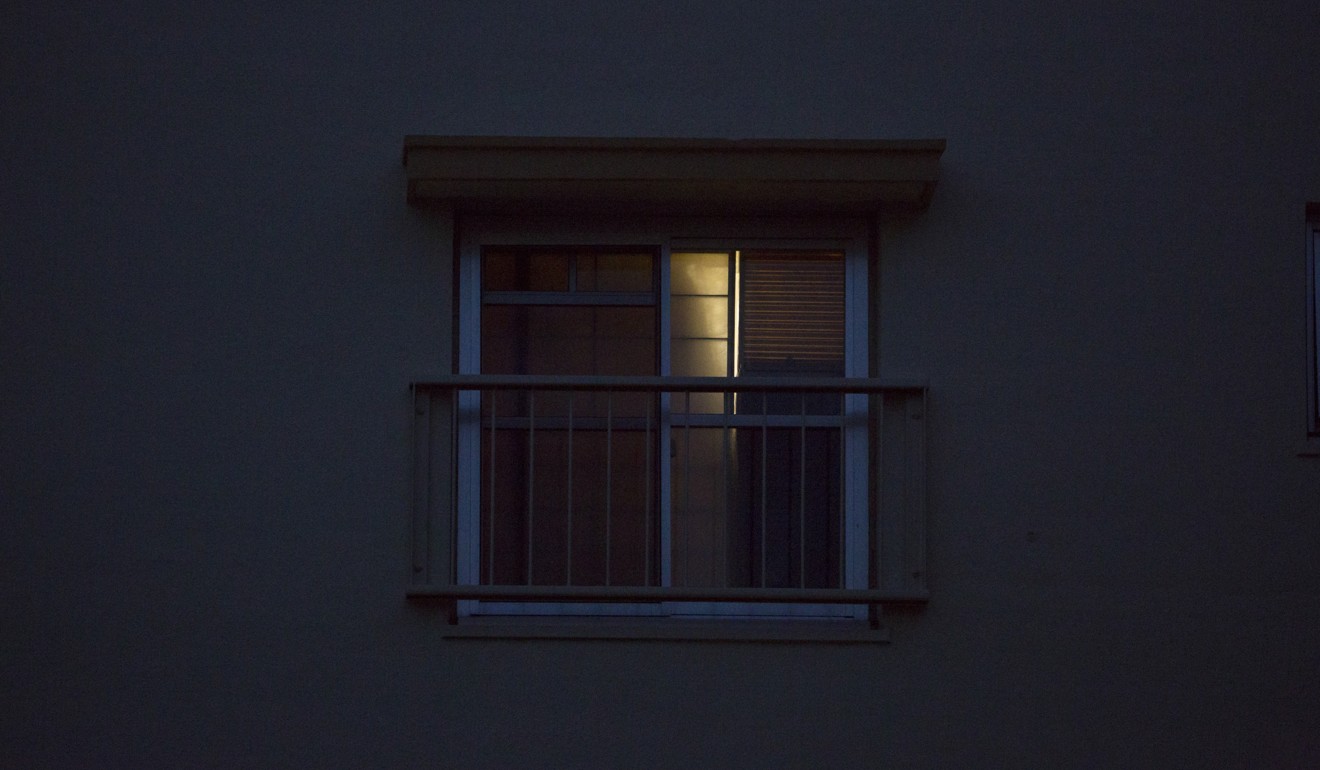 Ito uses paper screen on her window to alert a neighbour in case of her death.
Ito uses paper screen on her window to alert a neighbour in case of her death.
She has been lonely every day for the past quarter of a century, she says, ever since her daughter and husband died of cancer, three months apart. Ito still has a stepdaughter, but they have grown distant over the decades, exchanging New Year’s cards or occasional greetings on holidays.
So Ito has asked a neighbour in the opposite building for a favour. Could she, once a day, look across the greenery separating their apartments and gaze up at Ito’s window?
Every evening at about 6pm, before retiring for the night, Ito closes the paper screen in the window. Then in the morning, after her alarm wakes her at 5.40am, she slides the screen back open.
“If it’s closed,” Ito told her neighbour, “it means I’ve died.”
Ito felt reassured when the neighbour agreed, so she began sending the woman gifts of pears every summer. If her neighbour happens to notice the paper screen in daylight, the woman can promptly alert authorities. Everything else has been thought out and taken care of in advance. On her 90th birthday, Ito filled out an “ending note” that organised her final affairs.
The notes, which have become popular in Japan, help ensure a clean, orderly death. Ito has also given away the tablets from the family’s Buddhist altar – the miniature headstones considered so precious that many Japanese would scoop them up before running out of a house on fire.
[Chieko Ito] has been lonely every day for the past quarter of a century, she says, ever since her daughter and husband died of cancer, three months apart
So many things in her flat now remind her of the dead. There are the paperbacks, hundreds of them jammed onto shelves, that her dying husband told her to throw away after reading. The finely carved chest of drawers, which her daughter carted away after getting married, sits there, too, returned decades ago when the young woman died. Tucked inside a cabinet are the books Ito wrote herself, including a dry but exhaustive two-volume work about her life in the housing complex and a 224-page autobiography, all finished in a burst of activity.
Ito, meticulous as ever, has even left behind money to clean out her home once the day arrives. The only thing left to do is to wipe away the red colouring from her name, already engraved on the family headstone, to signify that she has finally joined her husband and daughter.
“Everybody around me has died, one after another, and I’m the only one left,” she says. “But when I think about death, I’m afraid.”
Nameless souls
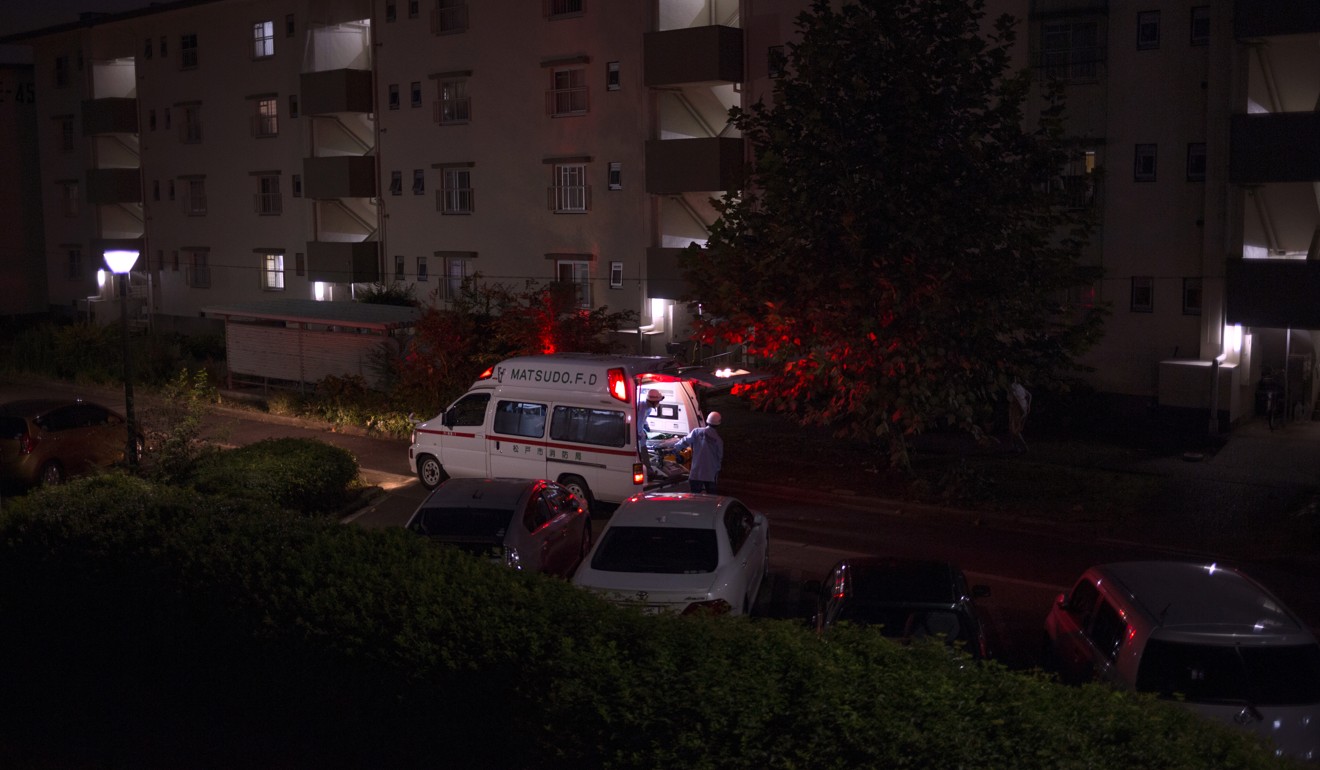 Ambulance sirens have replaced the sound of children’s laughter in Tokiwadaira.
Ambulance sirens have replaced the sound of children’s laughter in Tokiwadaira.
The heat soon starts taking its toll. By midsummer, two bodies have been discovered in the complex – victims, it seems, of the heatwave. The first death occurred in Ito’s section, where a woman detected a smell from the flat below. Initially, she thought somebody had got a delivery of dried fish called kusaya. Then the stench intensified, especially on the balcony where she dried her laundry. None of the dead man’s neighbours knew him, although he had lived there for years. He was 67.
The second man’s body was found two days later. Again, the smell had become so intense that it had kept his next-door neighbour awake for three nights. The man was elderly, had lived there for years and chatted about the cherry blossoms with his neighbours, but they did not know his name. The inside of his apartment, visible through a small ventilation window, was covered in rubbish. Green bottle flies hovered around the vent.
The building management tried to contain the smell, taping over every crevice – the edges of the men’s front doors, their letter boxes, even the locks. It was futile. The stench seeped out, filling hallways, stairways and homes.
Ito keeps busy, trying not to think about it. She takes long walks outside the complex, which stretches across a Tokyo suburb for almost two kilometres, spreading out in the shape of a giant fan. She keeps track of her steps on her phone, spends an hour every morning writing Buddhist sutras to her daughter and husband, and helps keep local forests clean with a volunteer group.
Elderly Hongkongers are way more likely to kill themselves than others. Why?
Every month, she attends lunches organised by residents to keep the isolation at bay and reduce the risk of lonely deaths. At the gatherings, she has settled into a routine, always sitting at a table across from a man with wobbly legs and a big appetite, Yoshikazu Kinoshita. The two could hardly be more different – her days are organised to the minute; he gets out of bed only when he feels like it. But their conversations, which some might dismiss as small talk, have acquired deep meaning.
“That’s the way I manage,” she says of her activities.
Ito speaks rapidly, in long sentences, with an unusual directness for someone of her generation. Even in uncomfortable moments, she never seeks refuge in the vagueness of the Japanese language. For the rare occasions that words fail her, she keeps voluminous proof of the life she has lived, catalogued exhaustively by year and subject. The photo books in her flat are filled with black-and-white images of young families like hers. And bound in yellow covers, with titles in Ito’s elegant calligraphy, are the books she has written, including the two-volume collection on her life in the housing complex: Tokiwadaira.
The Itos arrived in mid-December 1960, on the first day that tenants were allowed in. It was a clear day, full of promise, with Mount Fuji visible in the distance from their third-floor balcony
In the 60s, the Japanese government built huge housing developments outside Tokyo and other cities, each holding thousands of young salarymen entrusted with rebuilding Japan’s post-war economy. The complexes – sprawling collections of buildings called danchi – introduced Japan to a Western structure of life centred on the nuclear family, breaking from the traditional multigenerational homes. The new flats, seen as essential to Japan’s rebirth, had strict requirements. The monthly wages of tenants in Tokiwadaira had to be at least 5.5 times the rent, ensuring that only the most successful people got in.
Ito’s husband, Eizo, worked at a top advertising agency, but competition to enter one of the danchi was so fierce that the couple had given up after 13 tries. Then a relative secretly submitted an application in their name for a place still under construction, on farmland an hour east of Tokyo.
Even before Shinto priests purified the soil and construction workers broke ground, Tokiwadaira was drawing interest nationwide. The Japanese had never seen anything quite like it: about 4,800 flats devouring a space so large that it was serviced by two train stations on the same line.
The Itos arrived in mid-December 1960, on the first day that tenants were allowed in. It was a clear day, full of promise, with Mount Fuji visible in the distance from their third-floor balcony. Her four-year-old stepdaughter, Ito wrote in her autobiography, was “so happy that she ran around the apartment, drawing a complaint from their second-floor neighbour”.
Their new home was called a “3K” – three small rooms and a kitchen, with a bathroom and toilet. What struck Ito was not only the modern efficiency of the place, the concrete sturdiness that seemed capable of withstanding the strongest earthquakes, or the sun that came into every room. Peeking into the kitchen for the first time, she found the item that had, perhaps more than anything else, caused housewives to dream of life in the danchi: a sink, no longer made of tiles, but of sparkling stainless steel.
Her kitchen stood in the centre of the flat, not in a dark corner at the back of the house like in old Japanese homes. Its centrality spoke of the new, elevated role of housewives. Like other privileged residents of the danchi, Ito soon enjoyed the newest home appliances – a refrigerator, washing machine and black-and-white television.
Every New Year, the family put on their kimonos for photos. They also took part in the annual sports days, a ritual of Japanese life
“We called them the three sacred treasures,” Ito says. The term, popular back then, was the burgeoning consumer society’s reinterpretation of the three sacred treasures in Japan’s imperial mythology: the sword, mirror and jewel. “We were happy,” Ito says.
After Ito gave birth to a daughter a couple of years later, everything was settled. Her husband rode the packed train six days a week to Tokyo. She taught at a nursery school inside the complex. The danchi’s population of children swelled, just as it did all over Japan. In a few years, there were so many children that they collectively became known as Japan’s second baby-boom generation.
Every New Year, the family put on their kimonos for photos. They also took part in the annual sports days, a ritual of Japanese life in which children and parents compete in races and other events. In the summer, Ito took her daughters to one of the danchi’s wading pools. In her photos, the pool is always full of water, always full of young mothers in modest one-piece bathing suits, always full of children. The housing complex even had its own song: “Burning with hope, full of health and strength, let’s rise all of us.”
 Ito (top left) with her daughters Chizuko, in the yellow cap, and Eriko, in the white cap with black dots, in the summer of 1967 at the complex’s pool.
Ito (top left) with her daughters Chizuko, in the yellow cap, and Eriko, in the white cap with black dots, in the summer of 1967 at the complex’s pool.
Ito used to stand at her window, the one with the paper screen, and look down at the playground and sandboxes below. The children of the nearby buildings played there together, their shouts loudest during summer. Now, no one plays there. The children have mostly vanished, their jubilant cries replaced by the frequent sirens of ambulances.
The fading danchi are no longer a symbol of the young families rebuilding Japan. Nearly half of Tokiwadaira’s residents are over 65. During a midsummer walk, Ito points to the pool captured in her pictures decades ago. It is empty: a large circle, with fallen twigs and dirt littering its faded pale blue bottom.
“This is the pool, where my children used to swim,” Ito says, suddenly growing quiet.
She stands in the deserted playground, slowly taking in a place that, to her, seemed more real in her photos than in the present day.
“It’s gone!” she says after a few seconds. “There was a jungle gym here before. I used to let them play on it. Now it’s gone. So many things are.”
After life
 Ito writes about her life and lost family members, a daily routine, in her Tokiwadaira flat.
Ito writes about her life and lost family members, a daily routine, in her Tokiwadaira flat.
When I first met Ito, it barely occurred to me that no one else had called or visited that afternoon. Only weeks later does she tell me – excitedly, as if she had been waiting for me to ask – that her birthday had fallen on the day of my first visit.
Instead, she had simply handed me her book: Chieko’s 53 years in Tokiwadaira Danchi. It was an encyclopaedia of dates, names, events and photos spanning 394 pages. No one else had read it, and it was not clear then, even to her, why she had gone through the considerable trouble of composing drafts in longhand, typing it up on her laptop and printing it out.
“Writing is such a hassle, so it’s strange, this need to write,” she says.
Ito was born into a family of storytellers. Her paternal great-grandfather was a celebrated professional narrator who travelled around the country, recounting episodes from Japan’s feudal history. He was known by the stage name Hogyusha Torin, and his works survive in the National Diet Library. Her grandfather, also a professional storyteller, lived with Ito when she was a child. He would sit at her desk, marking up his texts and binding the folding fan that he used during his performances.
“Maybe it’s in my blood,” Ito says.
Elderly people in Japan are getting arrested on purpose because they want to go to prison
In her book, Ito breaks her life in the danchi into two distinct parts. The first begins with her wedding and ends 32 years later with the deaths of her husband and daughter.
She gives the impression that her life – her true life – ended with theirs, especially that of her daughter, of whom she often speaks in the present tense. Sometimes she will tell a joke or show a flash of anger at the mention of her daughter’s death. More often, she stares straight ahead.
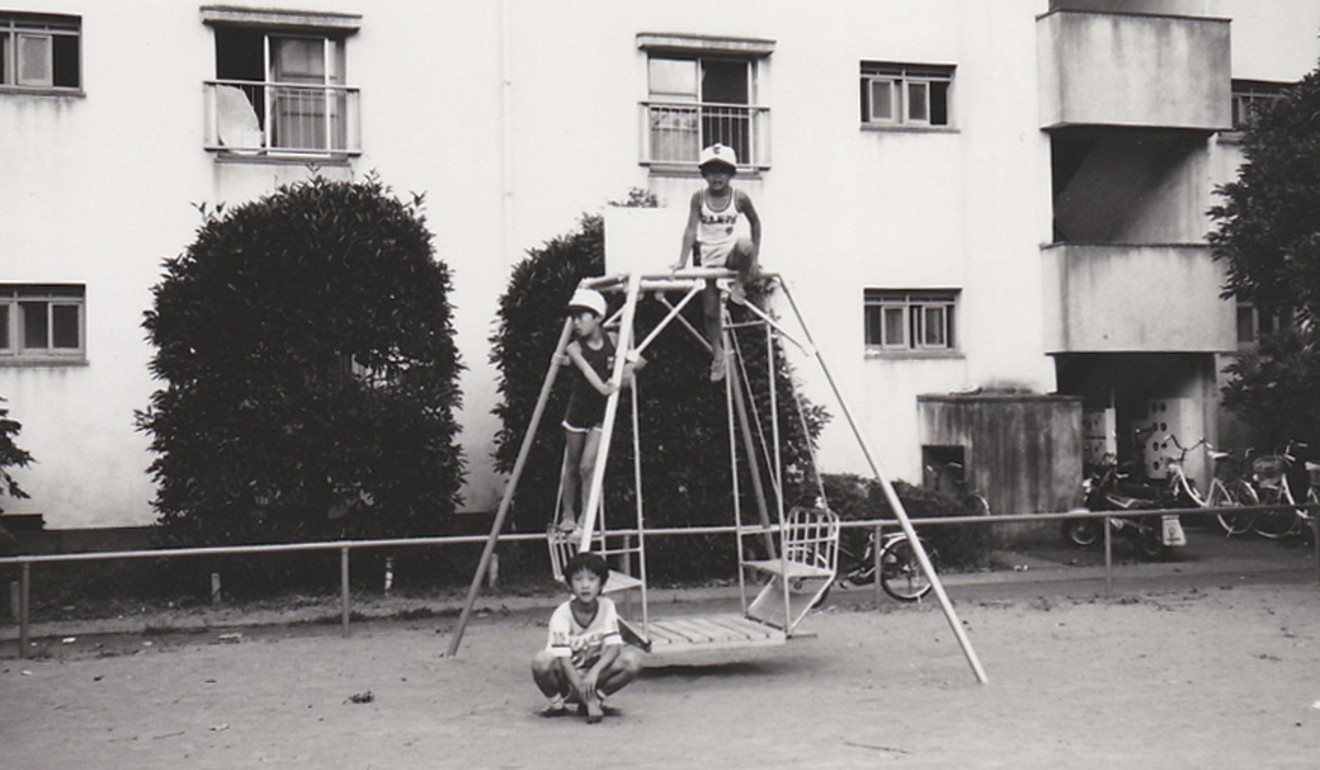 Children in the playground in the 1960s.
Children in the playground in the 1960s.
Part two – subtitled “My Second Life” – focuses on friends, trips and goings on around the housing complex. Old friendships are renewed and new ones are made, although Ito outlives them all.
As the weeks pass and the cicadas’ incessant cries became the backdrop to every conversation, Ito ultimately concludes that she started writing to break the solitude, so she wouldn’t forget. “Even the unhappy events,” she says. “Otherwise, everything is lost forever.”
After her husband and daughter died in 1992, Ito’s “Second Life” began. By then, Tokiwadaira and Japan’s other danchi had lost much of their lustre. Families preferred living in houses or condominiums. Ageing, childless couples and individuals gravitated to Tokiwadaira.
[Ito] gives the impression that her life – her true life – ended with [her husband’s and daughter’s], especially that of her daughter, of whom she often speaks in the present tense
One of Ito’s closest friends moved in after becoming a widow. They ran into each other at the local supermarket’s frozen foods section, so glad for the company that neither complained about the cold. “After that we became inseparable – that’s just the way I am,” Ito says.
Years passed. The woman died, as did other friends, inside and outside the danchi. Her sister developed dementia. A brother became homebound. Even a younger brother now had trouble walking. “I’ve been lonely for 25 years,” Ito says. “They’re the ones to blame for dying. I’m angry.”
At the monthly lunch for tenants who live alone, Ito, a light eater, got into the habit of giving her tablemate, Kinoshita, half of her meal before she started. After learning that he liked reading, she lent him a few books. He began lending her some, and included some chocolate.
Once, he asked her to come to his place to retrieve a book.
“That’s when I found out that his place was full of garbage,” Ito says.
Faded glory
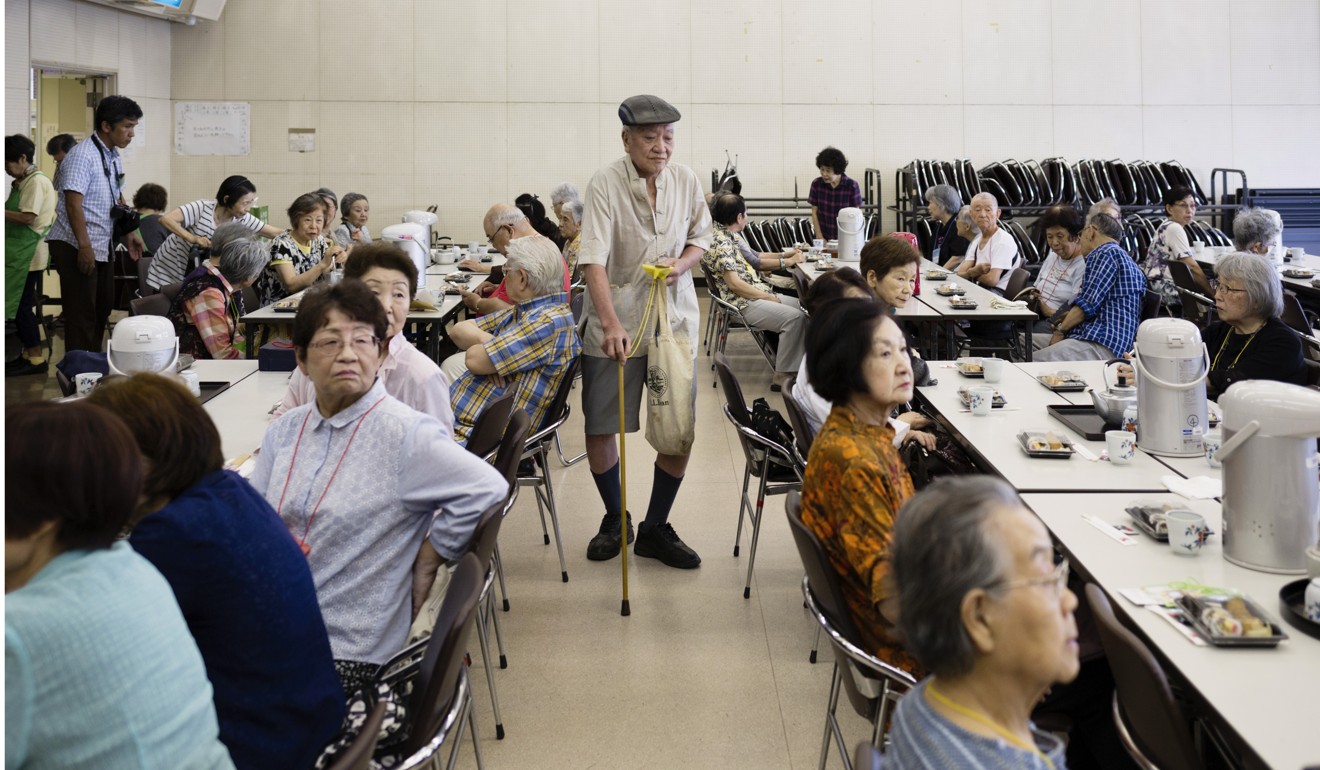 Yoshikazu Kinoshita attends one of the monthly lunches for tenants who live alone in the housing complex.
Yoshikazu Kinoshita attends one of the monthly lunches for tenants who live alone in the housing complex.
Kinoshita lives in a ground-floor “2DK” flat – two rooms and a dine-in kitchen. Piles of old clothes, boxes, books, newspapers, empty food containers and heaps of trash blanket the floor. A single open trail leads from the bed to the toilet, passing by the only clean item in the flat: a white T-shirt hanging from a shelf, still wrapped in the dry cleaner’s plastic.
Kinoshita is 83. His legs have grown weak and he rolls a “silver chair” to steady himself. He leaves his flat perhaps once a week.
After Ito saw the state of his apartment, she alerted community leaders. Men who live alone in the danchi, weakened by age and infirmity in flats like that, are the most vulnerable. She learned that volunteers were already keeping an eye on him.
Months ago, after he had not been seen for a week, a volunteer went knocking on his door. There was no answer, but she could hear the television from inside. Thinking he was dead, the volunteer called the police. When Kinoshita finally woke up from a deep sleep, he was a little embarrassed, yet also relieved and maybe even a little happy that his existence had figured into someone’s thoughts.
“Thanks for your kindness,” Kinoshita likes to say in English, perhaps avoiding sentiments that are too hard to express in Japanese.
With more elderly households and people aged above 80, can Hong Kong cope with its greying population?
He left Tokyo in his late 60s and moved into Tokiwadaira 14 years ago, just as the lonely deaths were becoming common. The year he moved in, Tokiwadaira recorded 15 of them. Today, volunteers have managed to reduce them to about 10 a year.
Kinoshita had lost everything before coming to the danchi. He had lost his company to bankruptcy and also the money he had borrowed from his sisters and brothers, who told him, “You’re the one who’s ruined the Kinoshita clan.”
He had lost his house and his second wife, who told him, “There’s no use staying with a husband who’d sell away our house.”
It would be easy to see Kinoshita as just another victim of the collapse of Japan’s economic bubble. His company, I Love Industry, which worked as a subcontractor on underground construction projects – the “tail of a mouse,” he says – rode the country’s construction boom from the 1960s through the 1990s until public works contracts dried up.
Yet he also enjoyed a moment of glory, one that he clings to the way Ito clings to Tokiwadaira in her books. During construction of the Channel Tunnel, he supplied a major contractor, Kawasaki Heavy Industries, with equipment – a reel for a hosepipe – to help bore under the Strait of Dover.
It would be easy to see [Yoshikazu] Kinoshita as just another victim of the collapse of Japan’s economic bubble
Kinoshita’s large eyes light up as he brings out his old business card, sketches of the equipment he provided and photos of himself in his heyday: at a celebration at Kawasaki’s headquarters; on site under the Dover Strait; visiting tourist attractions in Paris during his sole visit to Europe.
There are also talismans – a Eurotunnel key ring, which he holds between his fingers and shows people, without ever letting go, as if he is afraid of losing it. He has commemorative medals of the tunnel’s construction, a rock fragment encased in plastic and the T-shirt carefully preserved in dry-cleaning wrap. It has a blue and red circle with “Euro Tunnel” written inside.
From his foray in Europe, he brought back a habit of sprinkling some French words into his speech, on top of the broken English he picked up decades earlier from a college friend.
“All over Paris, I kept hearing, ‘Merci, madame,’” he says. “I couldn’t wait to go back to Tokyo and say, ‘Merci, madame.’”
Kinoshita takes out a large black-and-white shot of himself in his 20s, working in a rice warehouse. Wearing only a loincloth that emphasises his sinewy frame and rod-like legs, he carries three rice bags on his shoulders, totalling 180kg. “When I was young,” he says in English.
China’s huge market for senior care blessed with opportunities and challenges
Kinoshita was born in Taiwan, part of Japan’s colonial empire back then. His family returned after the second world war to southwestern Japan, where he ate the frogs he caught in rice fields. Even in the family’s poverty and his nation’s defeat, adolescent Kinoshita caught glimpses of a bright future in Japan’s energy and youth.
“My generation had dreams,” says Kinoshita, who went on to study mechanical engineering.
He had never imagined that his decline – and Japan’s – could be so rapid. Corporate giants like Sharp are now being taken over by a company in Taiwan, Japan’s former colony, he says with bewilderment. In 2011, when Japan was hit by a terrible earthquake and tsunami, Kinoshita rose to his feet and steadied a cabinet from toppling over. Today, the same legs that supported the bags of rice can barely uphold his shrinking body.
The world he knew has shrunk, too. Kinoshita went to a health club until 2016. Sitting in the Jacuzzi helped his legs, and he liked it when women came into the tub. But one day he passed out in the Jacuzzi and an ambulance was called. He came to, refused to get into the ambulance and never returned to the health club. Now, he goes out only a few times a month – to the supermarket or to the monthly lunches, when he shares a table with Ito.
His friendship with “Madame Ito” gives him energy, although she is the one who does most of the talking. “She’s very assertive, to the point where I can’t get a word in,” he says.
He is touched that she gives him half of her lunch, and that she lends him books, although he has racier tastes. “I tend to prefer erotic books,” he says.
On a rare trip outside Tokiwadaira, Kinoshita takes the train to Tokyo. He brings back Hershey’s chocolate bars for Ito and for the volunteer who comes knocking on his door. Kinoshita calls her “Madame Eleven”.
He hopes to make copies of his Eurotunnel T-shirt for Madame Ito and Madame Eleven. He bought a dozen during his trip to Europe, but the one in the dry-cleaning wrap is the last.
Spirits remain
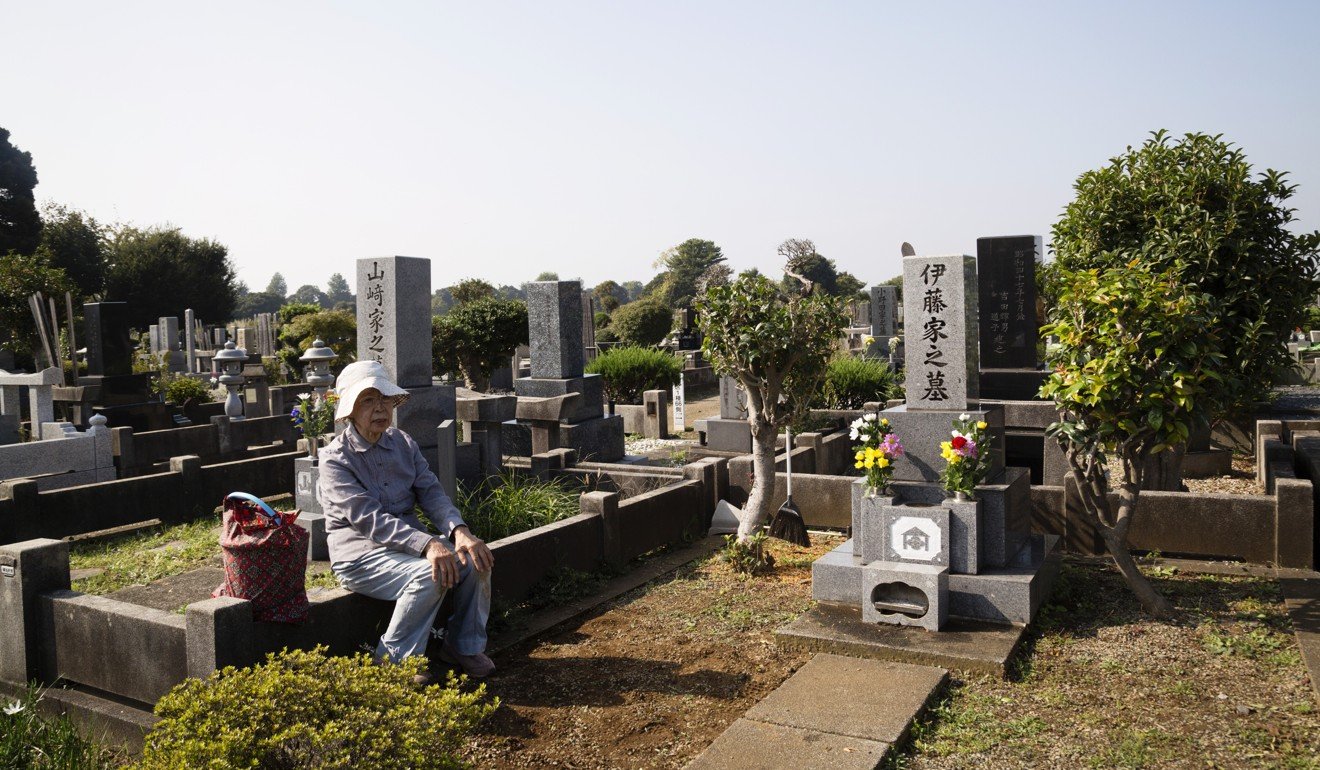 Ito at her husband’s family grave.
Ito at her husband’s family grave.
On July 24, the monthly anniversary of her daughter’s death, Ito leaves her apartment early in the morning to visit the grave, following the same path she has taken for the past quarter-century. Tall and long-limbed for someone of her generation, she walks with a straight back, maintaining the posture of someone much younger. Wearing jeans and trainers, she heads up a narrow pavement, nearly touching the cars stuck in morning traffic beside her.
The annual Obon festival of the dead is just a few weeks away, so Ito also drops by a local pear farmer and orders fruit to be sent to her brothers and others, including the neighbour who looks up at the paper screen in her window.
She has never failed to visit the graves, even on cold winter mornings. But she has made a few concessions for age, visiting her husband and daughter twice a month until she turned 85, then once a month since then. She brings food, eating it next to her daughter. She speaks to her, recounting events since her last visit. The cemetery is always quiet, except when the cicadas appear.
“I don’t tell her anything that might cause her to worry – I’ll never tell her any problems I might have,” Ito says.
She picks up a bucket and fills it with water. With a white cloth, she gently washes her daughter’s black headstone. It rises nearly as tall as Ito herself, who has lost more than 5cm of her height to age. “I can’t reach the back, so I do only the front,” she says, laughing.
Cat refuses to leave man’s grave in Malaysia
She arranges the flowers she has brought, including lilies, her daughter’s favourite. She always avoids chrysanthemums, which are associated with death in Japan, and her daughter disliked them, anyway. She lights sticks of incense, closes her eyes, puts her hands together and bows her head.
Speaking to her daughter and husband, Ito believes, keeps her healthy. “At this age, usually, you can’t hear or see any more, or you’ve lost your teeth. Everything,” she says. “I think they’ve protected me.”
This belief – that the spirits of the dead remain part of the lives of the living – is rooted in the Buddhism that guides the Japanese on matters of death. Maintaining that link comes by taking care of the family grave. But in an ageing society with fewer children, the difficulty of the task is now a daily topic of conversation. “What do we do with our graves?” asked the same weekly magazine that tapped into the national anxiety over lonely deaths.
Some plots in the same row as Ito’s daughter are showing the neglect: weeds grow out of crevices, threatening to invade headstones. Entire areas are hidden under overgrown plants and small trees, covering the names of the dead. They are like the ageing villages across Japan that, after the last inhabitants become too feeble or die, are being reclaimed by nature.
Ito’s daughter, Chizuko, died at the age of 29. She had long been sickly, but when she died, Ito waited outside the crematory as her husband went in. “I just couldn’t watch my own daughter being put into the fire,” Ito says.
It was her daughter’s death that left her truly alone. If her daughter were alive, she would not have to ask her neighbour to watch the paper screen in her window. She would not have to send the pears every summer. “If this child were here now,” she says, “there would be nothing to worry about.”
I’ve been lonely for 25 years. They’re the ones to blame for dying. I’m angry
In keeping with Japanese custom, the dead often receive Buddhist names, which are engraved on their headstones. Once delivered from this world, they move on to the next, bearing new names as Buddhas themselves. That way, they will not mistakenly return to this world if the living happen to call them by their old names.
Ito’s daughter, though, did not have a posthumous Buddhist name. The engraving on the headstone reads, “According to the wishes of the deceased, she has become a flower and rests here.”
Sitting in Ito’s flat, I remember that she mentioned a collection of photo albums of her balcony. I ask to see it, and she immediately pulls out 11 slim volumes catalogued with her typical precision.
I expect balcony photos similar to those in her other collections: her young daughters sitting in an inflatable pool, or the portrait of her husband shown at his funeral, of him standing on the balcony on a rare snowy day.
But the photos in these albums are all of flowers, flowers that Ito has kept on her balcony since her daughter’s death – amaryllises, geraniums, carnations, roses, morning glories, narcissuses, marigolds, every flower, it seems, with the exception of chrysanthemums.
“I wonder,” she says earnestly, “why I took so many.”
Life continues
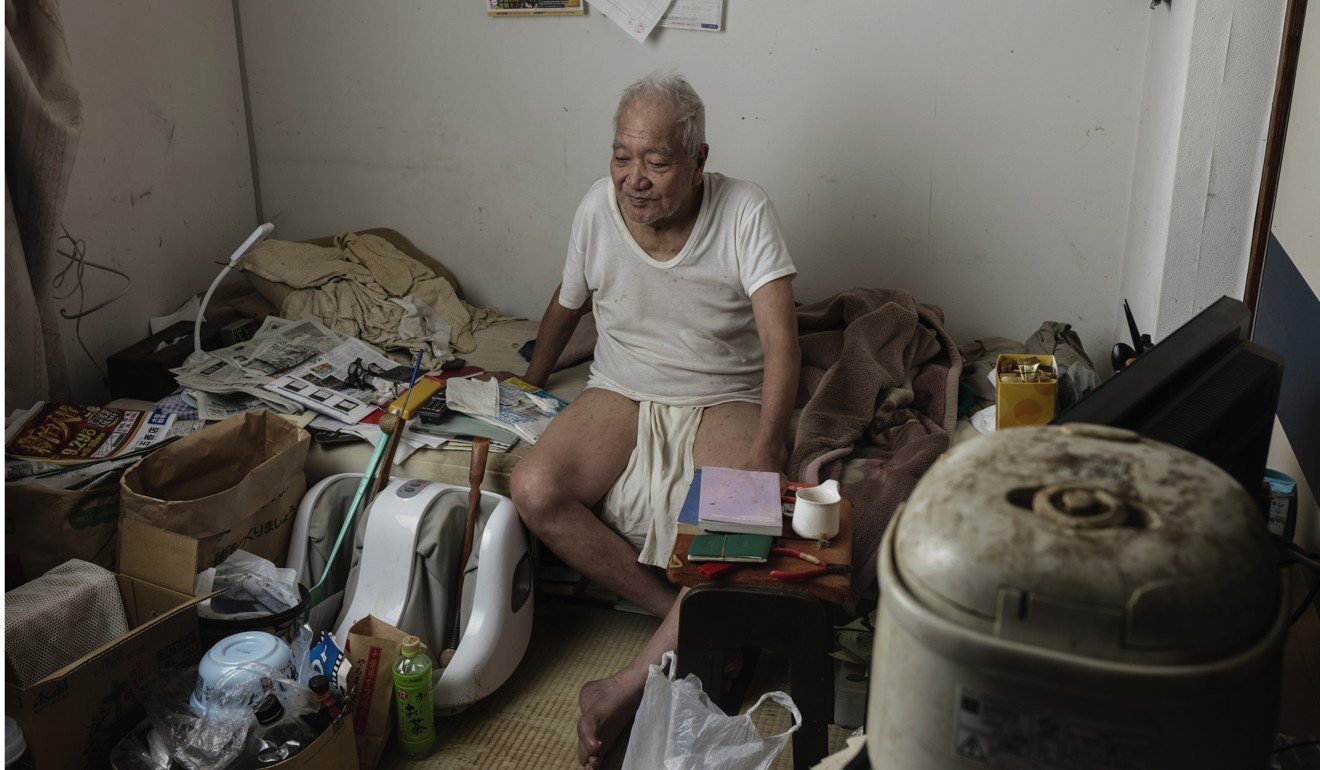 Kinoshita in his rubbish-strewn Tokiwadaira flat.
Kinoshita in his rubbish-strewn Tokiwadaira flat.
To community leaders in the danchi, powerful odours coming from the flats of men like Kinoshita – of sweat, urine, stale food and rubbish – are the reassuring smell of life. When they come out of the letter box of an apartment, they know no one is dead inside. It is, perhaps more precisely, the smell of somebody clinging to life, which Kinoshita carried with him whenever he went outside.
But as his legs weakened, Kinoshita’s world shrank to the confines of his apartment. Then, as the rubbish piled up, his apartment shrank to his bed, where he sat or lay during midsummer weeks, usually dressed only in a loin cloth.
He gave up trying to clean. A social worker visited last year, carting away a drafting machine used to design equipment for the Eurotunnel. But the trash piled up again. When a cold kept him indoors over the summer, maggots appeared inside a bowl of unfinished instant curry on the floor.
The midsummer cries of the cicadas – “meeen, meeen, meeen” – echo inside his apartment. Although they annoy Ito, they appeal to Kinoshita’s sense of the ephemeral. “They cry desperately, they continue to cry as long as they’re alive,” Kinoshita says.
 A cicada shell in Tokiwadaira.
A cicada shell in Tokiwadaira.
His favourite are the cicadas that appear in late summer every year, singing “tsuku-tsuku boshi” and signalling the coming change in seasons. His eyes bulge with excitement when he hears them for the first time outside his window.
He is still a man of appetites, whether it is the lunch he accepts from Ito or the memory of intimacy. “When I was young,” he says.
One evening, he puts in his dentures and slips on the shorts and shirt he wears when he leaves home. He is heading to a monthly music performance he regularly attends at a computer repair shop. It is the only event marked on his wall calendar for the month.
At the shop, a singer performs jazz standards. Her flirtatious voice and comments elicit small grunts of appreciation from Kinoshita. He taps his fingers to the music.
[Kinoshita] is still a man of appetites, whether it is the lunch he accepts from Ito or the memory of intimacy
During a break, the dozen mostly regular attendees speak to one another, sharing food and drinks spread out on a large table. Kinoshita sits quietly in a corner, eating voraciously and drinking from the best bottle of whiskey.
“Grandpa, you have expensive tastes, don’t you?” the host says, loudly enough for everyone to hear.
Some of the attendees say they have never seen Kinoshita before, although he is a regular just like them. I remember what a community leader told me about the men at risk of lonely deaths. The leader, an active Buddhist with a philosophical bent, says that those men – cut off from much human contact – are ghosts and ciphers, using a Japanese word that, phonetically, means both.
Perhaps the other regulars, all of them also elderly, have really never noticed Kinoshita. The exception is a man wearing a blue T-shirt with “The Coach” written on it. He speaks briefly with Kinoshita, who tells him about the Eurotunnel and shows him the key ring, his fingers never letting go.
By the last song, Kinoshita is facing a wall. He has turned around his chair, sinking into the music’s sweetness. “Monsieur,” the man in the coach T-shirt says, tapping him tenderly on the shoulder, “it’s over.”
Golden age
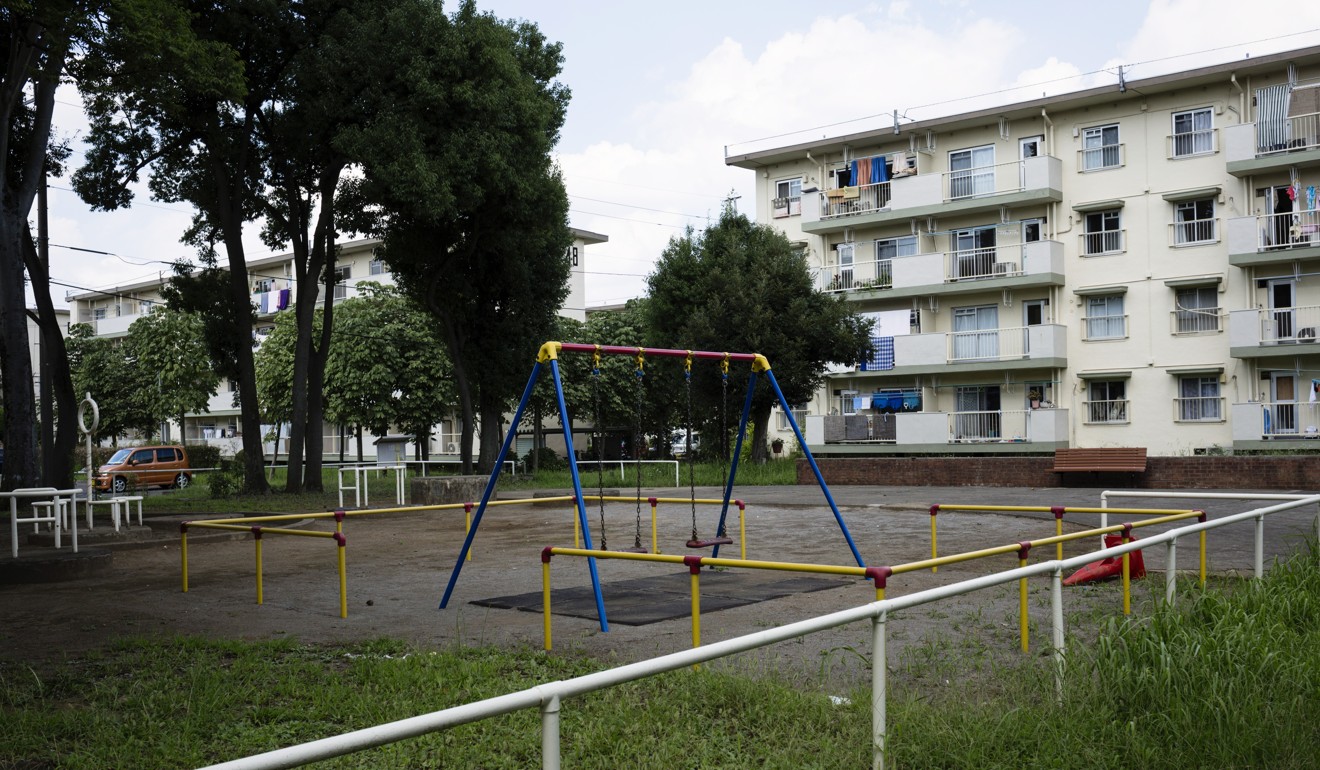 The estate’s playground is rarely used today.
The estate’s playground is rarely used today.
The housing complex in Ito’s books and memories, like other ageing danchi across Japan, has become a strong object of nostalgia in recent years. Movies, books and blogs have proliferated, dissecting and celebrating various aspects of life in the danchi.
They are mostly fuelled by a longing for a golden age in Japan’s post-war history, when the country, it seemed, was united in a vision of the future. But they depict a world far removed from actual life in places like Tokiwadaira, where the present has broken from the past.
With the arrival of late summer, community leaders hope there would be no more lonely deaths this season. Although weeks have passed, the door of the 67-year-old man who died in Ito’s section is still taped over and his smell remains in the stairs outside.
Showers of cicadas fall on Tokiwadaira. Their empty shells and dead bodies lay scattered everywhere. Ito finds them in the stairway outside her apartment. One lies in front of Kinoshita’s door.
With the Obon festival of the dead approaching, the supermarkets begin selling Obon kits, which include thin wooden sticks, a little horse and a cow. When lit, the burning sticks guide ancestors back to this world on a galloping horse. After three days, the living send the ancestors back to the other world, slowly, on the back of a cow. It is the annual reunion of the living and the dead.
Ito resumes cleaning the grave, pulling weeds and pouring water over the headstone where her name is engraved in red – the colour of a living person who intends to enter that grave some day
Ito stopped celebrating Obon decades ago. In the danchi, she could not light the sticks in front of her door, as her family had done in Tokyo. But the pears she ordered are delivered, as they are every summer, just before Obon. Calls of thanks arrive, including one during her monthly visit to her husband’s grave.
“Hello? Who is this please? Eriko?” Ito says, answering her cellphone in front of the grave.
Ito and Eriko, her stepdaughter, rarely speak. Ito sends pears. Eriko sends her carnations on Mother’s Day. The phone call lasts a couple of minutes.
“But you take care. You’ll be 60 years old, soon enough. There’s no contact – I know, there are a lot of people. I even have great-grandchildren. Everybody’s busy, that’s why I imagine there’s no contact. Thanks for the carnations. All right, you take care of yourself.”
Ito resumes cleaning the grave, pulling weeds and pouring water over the headstone where her name is engraved in red – the colour of a living person who intends to enter that grave some day.
“When I die,” she says, “they can just take out the colour.”
Her cremated remains will be buried under the headstone. Her possessions, even her exhaustively chronicled autobiographies, will almost certainly be incinerated.
Neighbourhood watch
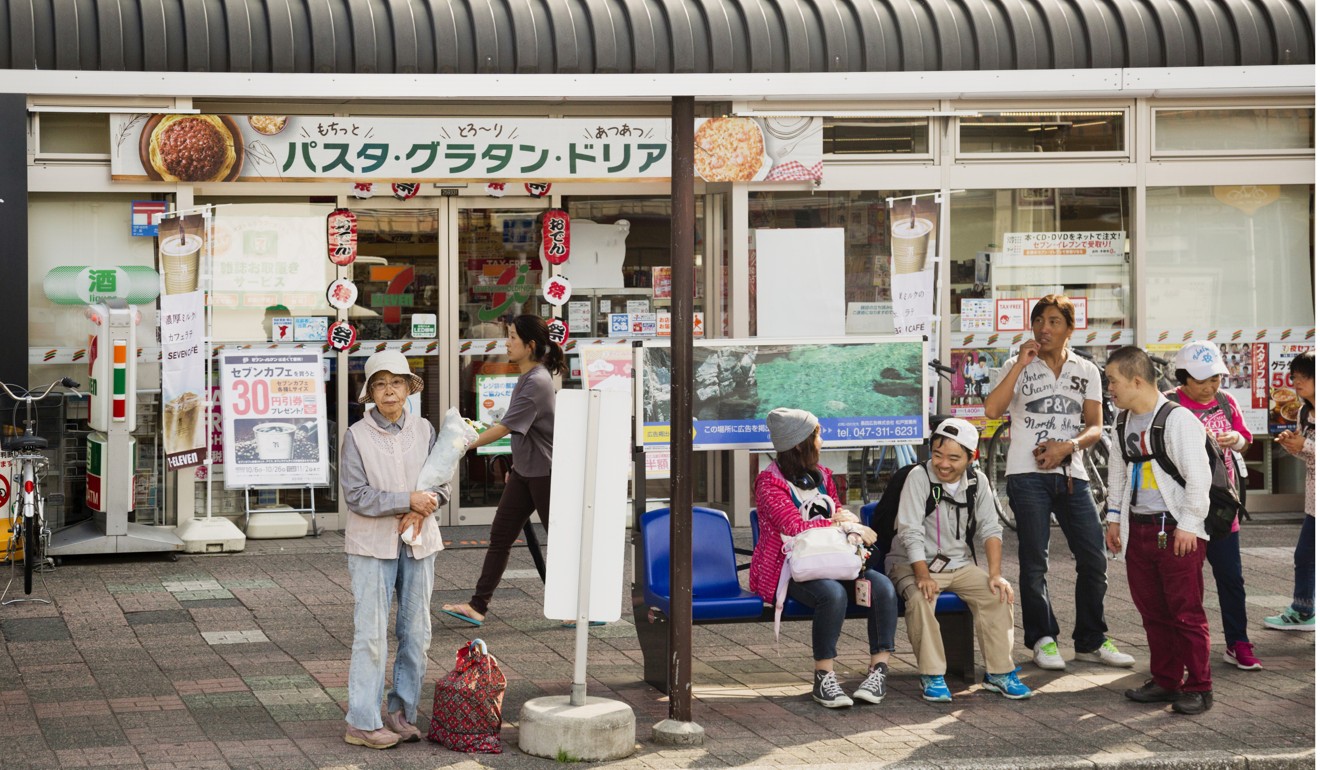 Ito waits for a bus to visit the family grave.
Ito waits for a bus to visit the family grave.
It is a very short walk from Ito’s home to the ground-floor apartment of her neighbour, Toyoko Sakai, 83, the woman tasked with looking at her window once a day. Ito lights a stick of incense and clasps her hands before the woman’s Buddhist altar. A portrait of Sakai’s deceased husband sits in a frame between bouquets of flowers. A melon and a big round pear, one of the pears Ito sent her, sit below the portrait. “Because you’re kind enough to look after me, I have to bring something,” Ito says.
Sakai, who is hard of hearing but has good eyes, has an unobstructed view of Ito’s window on the third floor, making her a good choice to watch the paper screen. Lately, though, Sakai’s attention has been drawn to another building, to a fourth-floor flat where garbage is piling up on the balcony. “On the fourth floor,” she says, excitedly. “You can see it from here.”
Hiding her anxiety, Ito redirects her neighbour to her own apartment, making sure that she is not unduly distracted and still keeping an eye on her window on the third floor.
“Yes, yes,” Sakai says, looking out her window toward Ito’s. “There, on the fourth floor.”
“The third floor,” Ito reminds her again, gently correcting her neighbour. “I’m on the third floor.” Sakai, not hearing, goes on, describing the window on the fourth floor.
“I’m on the third floor,” Ito repeats in a louder voice.
“The third floor!” Sakai says, finally understanding.
“The third floor, the one with the black net,” Ito says, as the two women laugh at the possibility that Sakai has been looking at the wrong window all along.
Dying days
The Obon holidays pass, as always, without a word from any of Kinoshita’s relatives. He stayed mostly inside, reading a book that lay next to his pillow, Men’s H. Women’s H (H being slang for sex).
As the oldest male, Kinoshita should have been the one to look after his family grave, but he relinquished the duty. He has no intention of entering the family grave. He caused his sisters and brothers too many problems with his bankruptcy, he says.
Kinoshita had a son from a first marriage that ended when the boy was a toddler – “I may have neglected him,” he says. They exchange New Year’s cards. Years ago, Kinoshita recalls with a smile, his son wrote that he was enjoying being a father.
Think outside the box to provide care for the elderly
“Even if they engrave my name on a headstone,” he says, “there’s nobody who will visit my grave.”
Instead, Kinoshita has registered with a medical school, to donate his body after death. The school will take care of everything. Every autumn, it will hold a memorial service at a Buddhist temple for Kinoshita and all other donors. It will clean out his apartment. His T-shirt and his key ring, perhaps like Ito’s books, will be swallowed up in an incinerator.
He is just worried about dying a lonely death. His organs, after all, have to prove useful.
“If you tell them to come and get a rotten body for medical research,” he says, “they won’t come.”
Rituals remembered
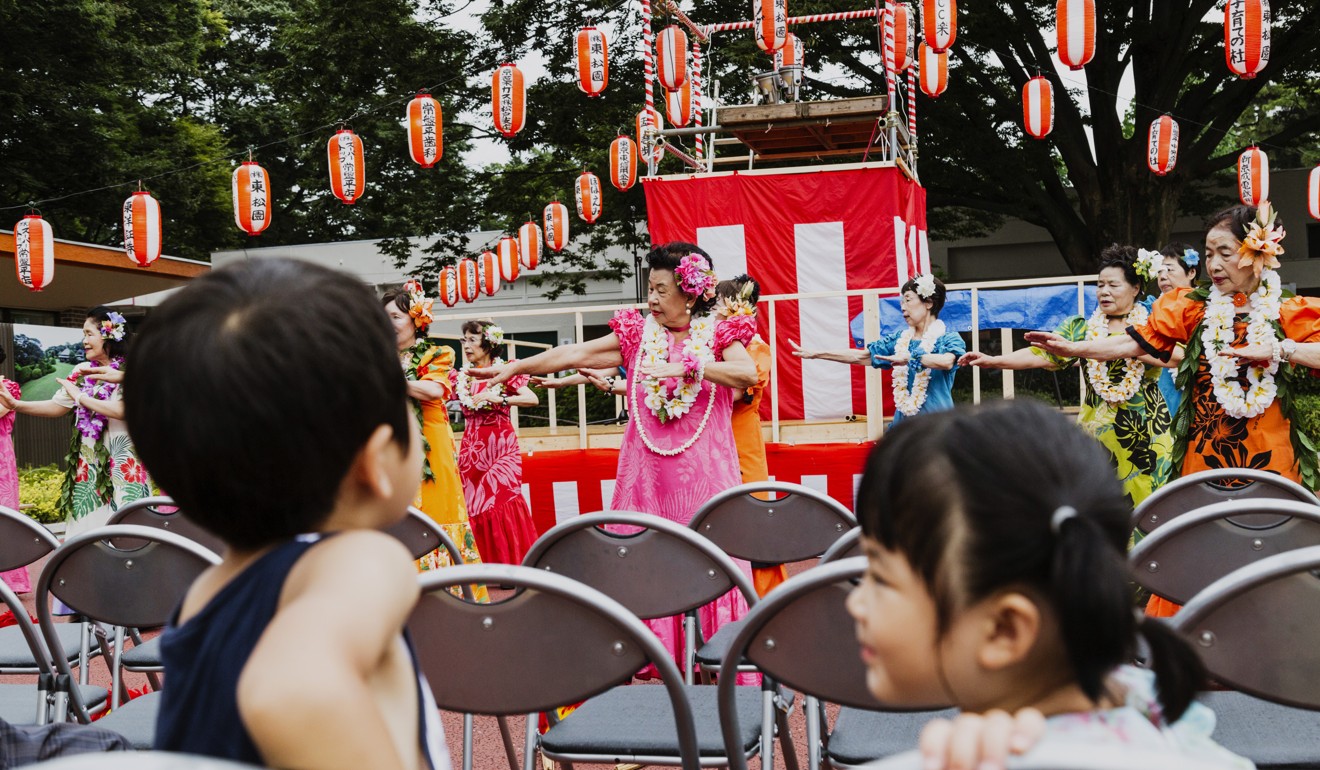 Performers at the complex’s annual Bon dance.
Performers at the complex’s annual Bon dance.
As it has for decades, Tokiwadaira holds its Bon dance during the last weekend of August. The late summer evenings are already noticeably cooler.
Ito seems troubled. Her neighbour’s confusion over the window has unsettled her. It is clear, she says, that the woman is not reliable. A day passes and Ito thinks about it some more. Over the years, her neighbour has visited her home – on the third floor – so surely she must know where Ito lives. It is, Ito convinces herself, just a lapse.
A few days before the dance, Ito got a phone call from her lunch companion, Kinoshita. After being cooped up in his apartment for what seemed like years, he couldn’t wait to go to the dance and checked with Madame Ito to make sure of the date. She had stopped going decades ago, after her children grew up. When the danchi swelled with children, the dance was held in a large park, not in the small plaza where it is now taking place.
“This now,” she says, “is nothing.”
Hong Kong must do more to care for the elderly
People begin gathering after sunset. They dance in circles around a stage in the middle of the plaza, illuminated by hanging red and white lanterns.
Kinoshita slowly pushes his silver chair through the crowd, resting on a bench under an elm tree. He faces away from the women dancing on the stage, the ones wearing the kimonos he longed to see, just as he turned away from the jazz singer. When introduced to someone new, he simply says, “The only thing I have left is the Eurotunnel.”
It is getting dark. Crickets are singing, the harbingers of autumn in Japan. Deeper into the danchi, toward Ito’s apartment, the door of the dead 67-year-old man is still taped over, the smell refusing to disappear. Deeper still, past the deserted pool and the playground where her daughter used to play, Ito’s window is visible, faintly, in the night.
The paper screen is closed, waiting for her to slide it back open in the morning.
© 2017 New York Times News Service
http://www.scmp.com/magazines/post-magazine/long-reads/article/2139153/lonely-deaths-why-japans-ageing-population-dying
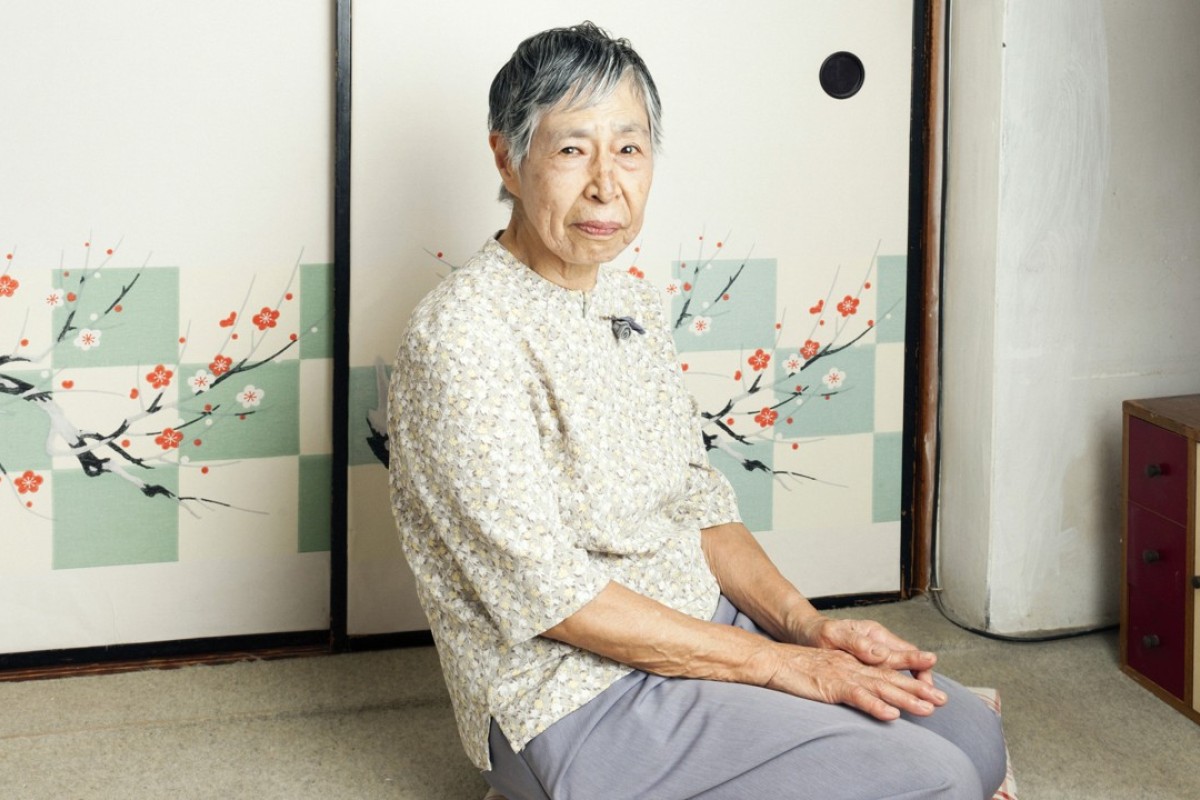

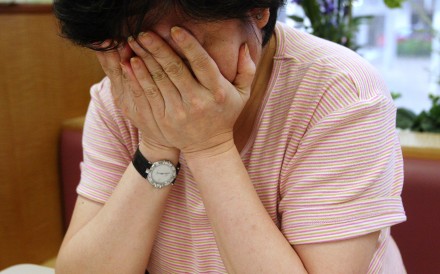
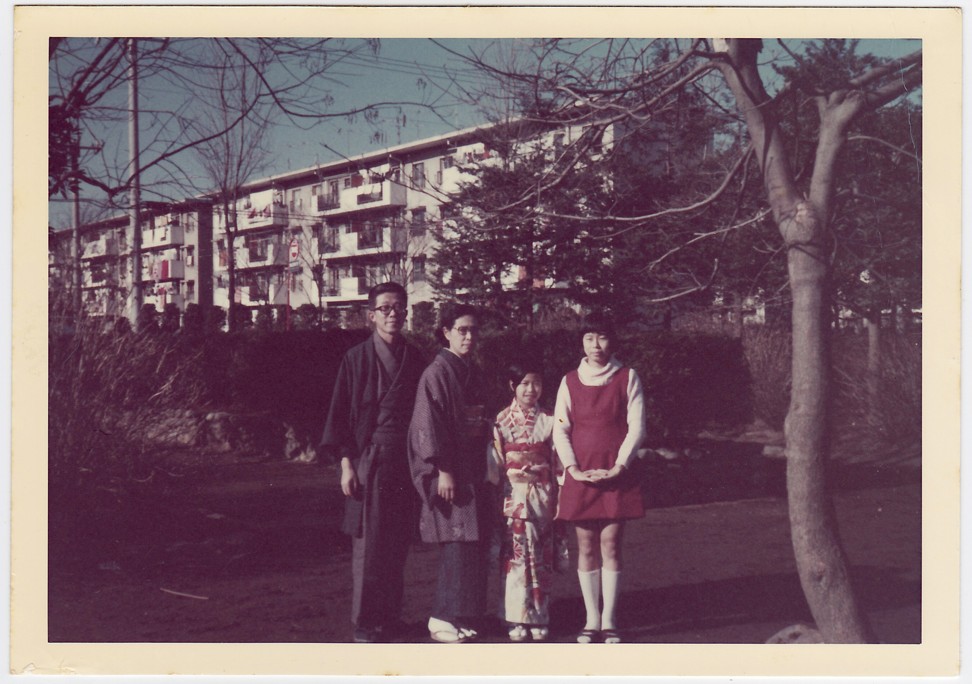
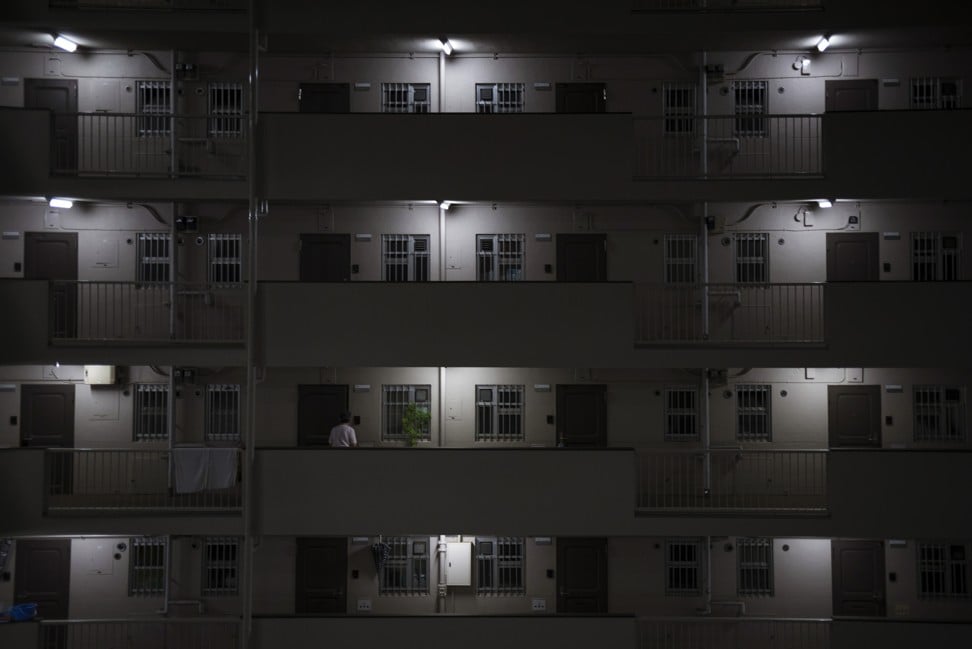
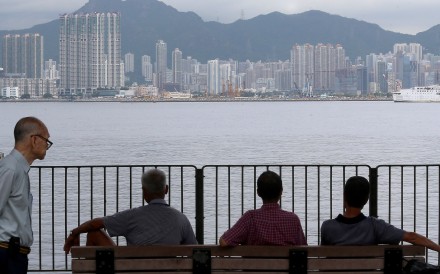
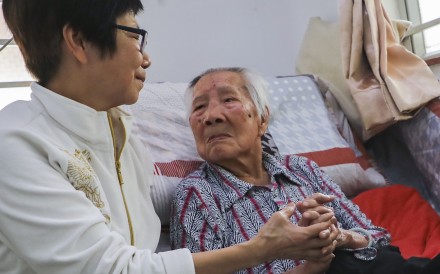

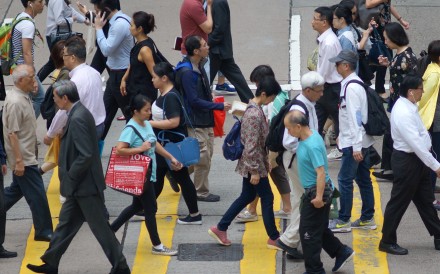
Comments